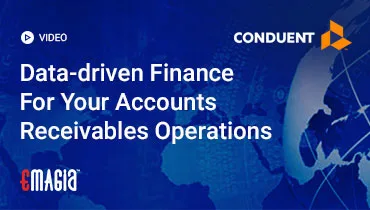Balance sheet reconciliation is a fundamental aspect of financial management, ensuring the accuracy and integrity of a company’s financial statements. This comprehensive guide delves into the intricacies of balance sheet reconciliation, providing real-life examples, methodologies, challenges, and solutions to equip professionals with the knowledge needed for effective financial oversight.
Introduction to Balance Sheet Reconciliation
Balance sheet reconciliation involves verifying the accuracy of account balances by comparing the general ledger with supporting documentation. This process is crucial for:
- Ensuring Financial Accuracy: Detecting and correcting errors or discrepancies in financial records.
- Compliance: Meeting regulatory requirements and standards.
- Fraud Prevention: Identifying unauthorized transactions or anomalies.
- Informed Decision-Making: Providing reliable financial data for strategic planning.
The Balance Sheet Reconciliation Process
1. Gathering Documentation
Collect all relevant financial documents, including:
- General ledger reports
- Bank statements
- Subsidiary ledgers (e.g., accounts receivable, accounts payable)
- Supporting documents (invoices, receipts, contracts)
- Previous reconciliation reports
2. Comparing Account Balances
Match the balances in the general ledger with those in supporting documents:
- Cash Accounts: Compare with bank statements.
- Accounts Receivable: Match with outstanding invoices.
- Accounts Payable: Align with unpaid bills.
3. Identifying Discrepancies
Note any differences between the general ledger and supporting documents, categorizing them as:
- Timing Differences: Transactions recorded in one period but not the other.
- Errors: Data entry mistakes or misclassifications.
- Omissions: Missing transactions.
4. Investigating Discrepancies
Analyze each discrepancy to determine its cause, reviewing transaction details and consulting relevant personnel if necessary.
5. Making Adjustments
Prepare journal entries to correct identified errors, ensuring all adjustments are documented and approved.
6. Finalizing Reconciliation
Confirm that adjusted balances match across all records, completing the reconciliation process.
Real-life Examples of Balance Sheet Reconciliation
Example 1: Overstated Inventory
A retail company reported inflated inventory values due to errors in its inventory management system, which failed to account for damaged goods. Reconciliation uncovered the discrepancy, leading to system overhauls and regular physical inventory counts to maintain accuracy.
Example 2: Misclassified Debt
A manufacturing firm risked breaching loan covenants due to misclassified short-term debt. Reconciliation revealed that some long-term loans were mistakenly categorized, prompting immediate corrections and renegotiations with creditors.
Example 3: Foreign Currency Transactions
A multinational corporation faced challenges reconciling accounts due to outdated foreign exchange rates. The reconciliation process adjusted financial statements to reflect accurate exchange rates and implemented systems for timely updates.
Example 4: Unrecorded Liabilities
A construction company’s reconciliation process uncovered liabilities not recorded in financial statements, leading to adjustments and improved tracking of obligations.
Common Challenges in Balance Sheet Reconciliation
1. Disparate and Disconnected Data
Financial data spread across multiple systems can lead to inconsistencies and errors. Centralizing data storage and standardizing formats are essential for effective reconciliation.
2. Manual Processes
Relying on manual data entry increases the risk of errors and consumes significant time. Automation can streamline processes and reduce inaccuracies.
3. Lack of Internal Controls
Without robust internal controls, discrepancies may go unnoticed. Implementing checks and balances ensures timely detection and correction of errors.
4. Spreadsheet Limitations
While spreadsheets are common tools, they are prone to errors and lack audit trails. Transitioning to specialized reconciliation software can enhance accuracy and compliance.
Best Practices for Effective Reconciliation
- Develop a Reconciliation Calendar: Schedule regular reconciliations based on account risk and transaction volume.
- Standardize Procedures: Create templates and guidelines to ensure consistency.
- Leverage Technology: Utilize accounting software to automate data extraction and comparison.
- Segregate Duties: Assign different individuals for preparation and review to enhance oversight.
- Maintain Documentation: Keep detailed records of reconciliation processes and adjustments for audit purposes.
How Emagia Enhances Balance Sheet Reconciliation
Emagia offers advanced solutions to streamline and automate the balance sheet reconciliation process:
- Automated Data Integration: Seamlessly connects with various financial systems to consolidate data.
- Real-time Reconciliation: Provides up-to-date account balances and identifies discrepancies promptly.
- Audit Trail Maintenance: Ensures all adjustments and processes are documented for compliance.
- Customizable Workflows: Adapts to specific organizational needs, enhancing efficiency and accuracy.
By leveraging Emagia’s capabilities, organizations can reduce manual efforts, minimize errors, and ensure the integrity of their financial statements.
FAQs
What is balance sheet reconciliation?
Balance sheet reconciliation is the process of verifying the accuracy of account balances by comparing the general ledger with supporting documentation, ensuring financial statements are accurate and compliant.
Why is balance sheet reconciliation important?
It ensures the integrity of financial statements, aids in detecting errors or fraud, supports regulatory compliance, and provides reliable data for decision-making.
How often should balance sheet reconciliation be performed?
The frequency varies based on account activity and organizational policies, but key accounts like cash and receivables are often reconciled monthly.
What are common challenges in balance sheet reconciliation?
Challenges include data discrepancies, manual processing errors, lack of internal controls, and limitations of traditional tools like spreadsheets.
How can automation improve balance sheet reconciliation?
Automation reduces manual errors, accelerates the reconciliation process, ensures real-time data accuracy, and maintains comprehensive audit trails.
Conclusion
Balance sheet reconciliation is a critical process that upholds the accuracy and reliability of financial statements. By understanding its importance, implementing best practices, and leveraging advanced tools like Emagia, organizations can enhance their financial integrity, ensure compliance, and make informed strategic decisions.



